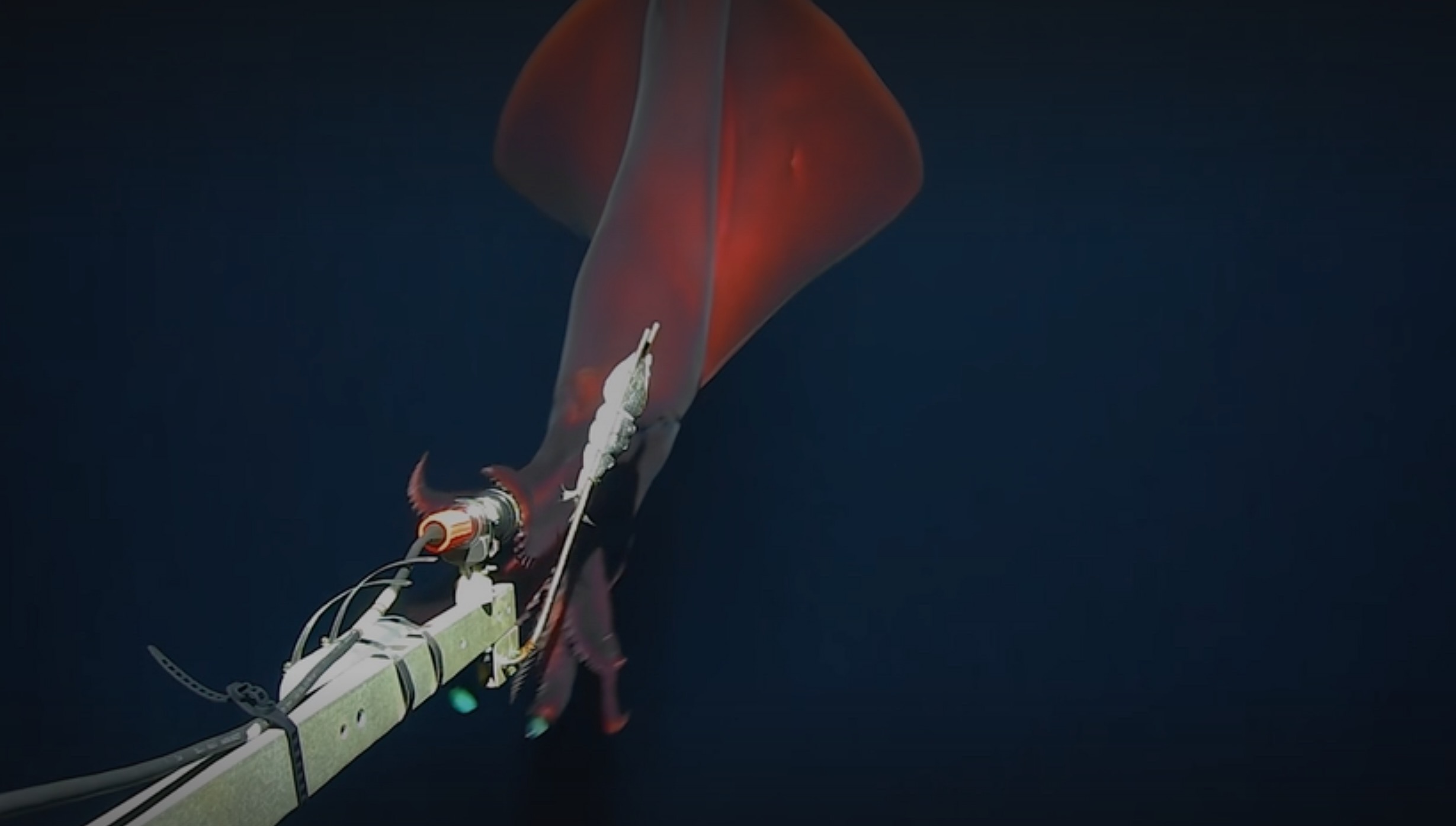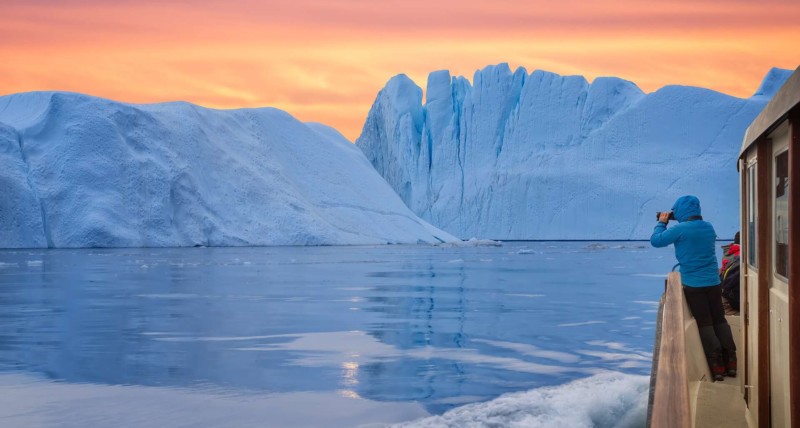The Dana squid has all the tools of a top ocean predator, including a pair of brilliant « headlights » it flashes at the moment it goes in for the kill.
They are intended to dazzle the prey, to make the victim freeze for those few moments longer until it can be captured in a death embrace.
Scientists have just filmed this rare squid in full attack mode, on a research cruise in the central Pacific.
It was about 1,000m below the surface, where conditions are near pitch black.
Those headlights, on the ends of two of its arms, are more properly called photophores – organs that react a mix of substances with oxygen to emit light. It is a classic example of bioluminescence.
And the 2m (6ft 6in) Dana squid (Taningia danae) is thought to have the biggest photophores in the animal kingdom – roughly the size of lemons.
« Most of our knowledge about this large squid comes from strandings, when they’ve been washed up on the shore, or when they’ve been accidentally trawled, » Prof Alan Jamieson, from the University of Western Australia (UWA), told BBC News.
« We also get to examine squid retrieved from the stomach contents of whales.
« All this can tell you about squid biology – but it doesn’t tell you much about their day-to-day existence, which is why it’s amazing to see them alive at the exact depth at which they operate. »

The video was filmed by free-fall cameras attached to a baited frame, a simple but effective device scientists drop overboard to investigate what is living at great depth.
The bait was a piece of mackerel flesh.
And although it is impossible to tell from the video, the cameras are falling at nearly 60m per minute when the squid attacks, showing how quickly it can move.
Lethal hooks
« You can actually see the membranes covering the photophores open and close to flash the lights on and off, » UWA colleague Dr Heather Stewart said.
« The squid itself misjudges its attack, misses the mackerel, and instead latches on to one of the cameras.
« When it realises its mistake, it hotfoots back out the way it came.
« But from that camera, you get a view of what it must be like to be the prey. »
The insides of the squid’s arms are covered in lethal hooks.

Dr Stewart and Prof Jamieson are affiliated to the Minderoo-UWA Deep Sea Research Centre, in Perth.
They are taking part in a five-year scientific programme with the support of Inkfish, a philanthropic marine organisation set up by the gaming billionaire Gabe Newell.
The team works from a research vessel called Dagon, with a crewed submersible, Bakunawa, capable of going to the full ocean depth of 11km.
These vehicles were previously used by the American financier and adventurer Victor Vescovo in his successful quest to become the first person in history to reach the deepest points in all five of the world’s oceans.
And Prof Jamieson will shortly be undertaking dives in Bakunawa that will investigate the world’s second deepest location – Horizon Deep, in the Pacific’s Tonga Trench, where the seafloor is 10,816m below the surface.



